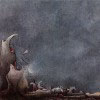 Eluvium's Matthew Cooper has eschewed the use of electronic and digitalmanipulation for his second album on Temporary Residence, preferringinstead to sit down a piano, turn the microphone on, and record thepure output of his fingers on the ebonies and ivories. What I came toenjoy most about last year's Lambent Material(a beautifully narcotic album) was the stark monotony of the tones.There was very little variation in a given song: piano restructured byway of electronics and effects. Each measure was laid out economicallyand in the perfect amount to satisfy the movement of the piece. Here,however, Eluvium produces an undiluted and more robust sound, full ofvirtuosic piano suites without any tampering on the end production. Thepace is slightly faster, the playing more frenetic (sounds simply slideinto each another), and the output is altogether a differentexperience. The sound is palpably lonely, as if you are peeking inunnoticed on a master at work alone is his studio, a painter engaged inthe first brush-strokes on a canvas. Likewise, Eluvium grants us accessto the very inner workings of his musical creations, isolating thesub-atomic particles of them. These particles are kinetic and lush andelegant in their spareness. The pensiveness is evident in every songregardless of length, be it only one-minute long ("An AccidentalMemory") or seven-minutes ("The Well-Meaning Professor"). Ironically, asong like "Nepenthe" is more lambent than anything on Lambent Material:notes flicker and collide, gliding up and down in arpeggios andcascades. It is not a long album; 27 minutes and suddenly the end hits.I feel as though I've been truly listening in on a daily practicesession (half an hour of piano playing squeezed in between a biologylab report and the Proust reading). Throughout my listenings of thisalbum, I could swear that I heard a telephone ringing, not in thebackground of the music, but somewhere in my apartment. I don't knowwhat aural resonance or vibrational frequency was causing thisphenomenon, and so it makes me think that someone, somewhere is tryingto get through to me. But I don't care. The music is still playing andI am a little transfixed by what I hear.
Eluvium's Matthew Cooper has eschewed the use of electronic and digitalmanipulation for his second album on Temporary Residence, preferringinstead to sit down a piano, turn the microphone on, and record thepure output of his fingers on the ebonies and ivories. What I came toenjoy most about last year's Lambent Material(a beautifully narcotic album) was the stark monotony of the tones.There was very little variation in a given song: piano restructured byway of electronics and effects. Each measure was laid out economicallyand in the perfect amount to satisfy the movement of the piece. Here,however, Eluvium produces an undiluted and more robust sound, full ofvirtuosic piano suites without any tampering on the end production. Thepace is slightly faster, the playing more frenetic (sounds simply slideinto each another), and the output is altogether a differentexperience. The sound is palpably lonely, as if you are peeking inunnoticed on a master at work alone is his studio, a painter engaged inthe first brush-strokes on a canvas. Likewise, Eluvium grants us accessto the very inner workings of his musical creations, isolating thesub-atomic particles of them. These particles are kinetic and lush andelegant in their spareness. The pensiveness is evident in every songregardless of length, be it only one-minute long ("An AccidentalMemory") or seven-minutes ("The Well-Meaning Professor"). Ironically, asong like "Nepenthe" is more lambent than anything on Lambent Material:notes flicker and collide, gliding up and down in arpeggios andcascades. It is not a long album; 27 minutes and suddenly the end hits.I feel as though I've been truly listening in on a daily practicesession (half an hour of piano playing squeezed in between a biologylab report and the Proust reading). Throughout my listenings of thisalbum, I could swear that I heard a telephone ringing, not in thebackground of the music, but somewhere in my apartment. I don't knowwhat aural resonance or vibrational frequency was causing thisphenomenon, and so it makes me think that someone, somewhere is tryingto get through to me. But I don't care. The music is still playing andI am a little transfixed by what I hear.  Eluvium's Matthew Cooper has eschewed the use of electronic and digitalmanipulation for his second album on Temporary Residence, preferringinstead to sit down a piano, turn the microphone on, and record thepure output of his fingers on the ebonies and ivories. What I came toenjoy most about last year's Lambent Material(a beautifully narcotic album) was the stark monotony of the tones.There was very little variation in a given song: piano restructured byway of electronics and effects. Each measure was laid out economicallyand in the perfect amount to satisfy the movement of the piece. Here,however, Eluvium produces an undiluted and more robust sound, full ofvirtuosic piano suites without any tampering on the end production. Thepace is slightly faster, the playing more frenetic (sounds simply slideinto each another), and the output is altogether a differentexperience. The sound is palpably lonely, as if you are peeking inunnoticed on a master at work alone is his studio, a painter engaged inthe first brush-strokes on a canvas. Likewise, Eluvium grants us accessto the very inner workings of his musical creations, isolating thesub-atomic particles of them. These particles are kinetic and lush andelegant in their spareness. The pensiveness is evident in every songregardless of length, be it only one-minute long ("An AccidentalMemory") or seven-minutes ("The Well-Meaning Professor"). Ironically, asong like "Nepenthe" is more lambent than anything on Lambent Material:notes flicker and collide, gliding up and down in arpeggios andcascades. It is not a long album; 27 minutes and suddenly the end hits.I feel as though I've been truly listening in on a daily practicesession (half an hour of piano playing squeezed in between a biologylab report and the Proust reading). Throughout my listenings of thisalbum, I could swear that I heard a telephone ringing, not in thebackground of the music, but somewhere in my apartment. I don't knowwhat aural resonance or vibrational frequency was causing thisphenomenon, and so it makes me think that someone, somewhere is tryingto get through to me. But I don't care. The music is still playing andI am a little transfixed by what I hear.
Eluvium's Matthew Cooper has eschewed the use of electronic and digitalmanipulation for his second album on Temporary Residence, preferringinstead to sit down a piano, turn the microphone on, and record thepure output of his fingers on the ebonies and ivories. What I came toenjoy most about last year's Lambent Material(a beautifully narcotic album) was the stark monotony of the tones.There was very little variation in a given song: piano restructured byway of electronics and effects. Each measure was laid out economicallyand in the perfect amount to satisfy the movement of the piece. Here,however, Eluvium produces an undiluted and more robust sound, full ofvirtuosic piano suites without any tampering on the end production. Thepace is slightly faster, the playing more frenetic (sounds simply slideinto each another), and the output is altogether a differentexperience. The sound is palpably lonely, as if you are peeking inunnoticed on a master at work alone is his studio, a painter engaged inthe first brush-strokes on a canvas. Likewise, Eluvium grants us accessto the very inner workings of his musical creations, isolating thesub-atomic particles of them. These particles are kinetic and lush andelegant in their spareness. The pensiveness is evident in every songregardless of length, be it only one-minute long ("An AccidentalMemory") or seven-minutes ("The Well-Meaning Professor"). Ironically, asong like "Nepenthe" is more lambent than anything on Lambent Material:notes flicker and collide, gliding up and down in arpeggios andcascades. It is not a long album; 27 minutes and suddenly the end hits.I feel as though I've been truly listening in on a daily practicesession (half an hour of piano playing squeezed in between a biologylab report and the Proust reading). Throughout my listenings of thisalbum, I could swear that I heard a telephone ringing, not in thebackground of the music, but somewhere in my apartment. I don't knowwhat aural resonance or vibrational frequency was causing thisphenomenon, and so it makes me think that someone, somewhere is tryingto get through to me. But I don't care. The music is still playing andI am a little transfixed by what I hear.  Chancing upon Basil Kirchin's previously unissued album Quantum: A Journey Through Sound in Two Partsreleased on Trunk last year was like stumbling onto a briefcase full oflarge, unmarked currency. The densely structured combinations oftime-stretched field recordings, jazz improvisations and tenseatmospherics had that dreamlike, dark, subconscious quality that I hadpreviously attributed only to 1980's underground cassette heroes likeRoger Doyle and HNAS. Technically, Kirchin's works could be describedas musique concrete, but his unorthodox, hallucinogenic collages ofsquawking geese, autistic children and backwards-tracked saxophonesolos seem well beyond the spectrum of academia to me. The Quantum release was one of my favorites of 2003, and it led me to seek out Basil Kirchin's amazing soundtrack to The Abominable Dr. Phibes and his pair of early-70's experimental masterpieces, both entitled Worlds Within Worlds. With Charcoal Sketches/States of Mind, Trunk continues their schedule of unearthing never-issued works by Kirchin. The Charcoal Sketchesof the title are three brief instrumental improvisations, overlaid withthe now-familiar recordings of birdsong, slowed and mutated to resemblethe bellowing hoots of a wounded gryphon. This material was recordedduring the nascent period before the Worlds sessions, and itdoesn't share the same furious and unpredictable fieriness of the otheralbums. The musicians appear to be playing off of the mutatedbirdcalls, cautiously weaving through a sparse work of gentle radiance.At times, the smooth funkiness of the guitar and bass, mixed with theotherworldliness of the fluttering whoops and chatters, reminded me ofthe soundtrack to Fantastic Planet grafted onto In a Silent Way-era Miles. States of Mindis considerably more disturbing, a collection of nine briefinstrumental sketches each meant to illustrate a different mentaldisorder. This music was used in the soundtrack for a short film shownonly once at an international conference of Psychiatrists held in 1968.The title of "Plaques and Tangles" refers to the brain degenerationcaused by Alzheimer's Disease. The track begins in a chaotic swell ofcompeting neuron fires, and eventually digresses into a dark fog ofconfusion. Frantic evocations of mania and paranoia are supplied byEvan Parker's frenzied saxophone solos. My only complaint is that themost of these tracks are far too brief and fragmentary, with not enoughtime given to fully develop the tantalizing themes. Consequently, it'snot nearly as immersive and powerful as Kirchin's other works. AlthoughI realize that this is inherent in the original sources from whichthese brief sketches are drawn, I hope that Kirchin chooses to revisitthis material at some future point and weave it into the kind ofmasterpiece I know he is capable of.
Chancing upon Basil Kirchin's previously unissued album Quantum: A Journey Through Sound in Two Partsreleased on Trunk last year was like stumbling onto a briefcase full oflarge, unmarked currency. The densely structured combinations oftime-stretched field recordings, jazz improvisations and tenseatmospherics had that dreamlike, dark, subconscious quality that I hadpreviously attributed only to 1980's underground cassette heroes likeRoger Doyle and HNAS. Technically, Kirchin's works could be describedas musique concrete, but his unorthodox, hallucinogenic collages ofsquawking geese, autistic children and backwards-tracked saxophonesolos seem well beyond the spectrum of academia to me. The Quantum release was one of my favorites of 2003, and it led me to seek out Basil Kirchin's amazing soundtrack to The Abominable Dr. Phibes and his pair of early-70's experimental masterpieces, both entitled Worlds Within Worlds. With Charcoal Sketches/States of Mind, Trunk continues their schedule of unearthing never-issued works by Kirchin. The Charcoal Sketchesof the title are three brief instrumental improvisations, overlaid withthe now-familiar recordings of birdsong, slowed and mutated to resemblethe bellowing hoots of a wounded gryphon. This material was recordedduring the nascent period before the Worlds sessions, and itdoesn't share the same furious and unpredictable fieriness of the otheralbums. The musicians appear to be playing off of the mutatedbirdcalls, cautiously weaving through a sparse work of gentle radiance.At times, the smooth funkiness of the guitar and bass, mixed with theotherworldliness of the fluttering whoops and chatters, reminded me ofthe soundtrack to Fantastic Planet grafted onto In a Silent Way-era Miles. States of Mindis considerably more disturbing, a collection of nine briefinstrumental sketches each meant to illustrate a different mentaldisorder. This music was used in the soundtrack for a short film shownonly once at an international conference of Psychiatrists held in 1968.The title of "Plaques and Tangles" refers to the brain degenerationcaused by Alzheimer's Disease. The track begins in a chaotic swell ofcompeting neuron fires, and eventually digresses into a dark fog ofconfusion. Frantic evocations of mania and paranoia are supplied byEvan Parker's frenzied saxophone solos. My only complaint is that themost of these tracks are far too brief and fragmentary, with not enoughtime given to fully develop the tantalizing themes. Consequently, it'snot nearly as immersive and powerful as Kirchin's other works. AlthoughI realize that this is inherent in the original sources from whichthese brief sketches are drawn, I hope that Kirchin chooses to revisitthis material at some future point and weave it into the kind ofmasterpiece I know he is capable of. 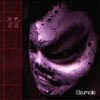 The music of David Y. Wang, who has releases on Bpitchcontrol,Tigerbeat6, and Violent Turd, suffers from a case of nostaglicschizophrenia with a touch of sentimental aural influenza, and as aresult some technique-obsessed modern day electronic music listenerswill undoubtedly have trouble with Uzumaki. Well fuck them.Fragmented sounds and fractured samples litter this short album likebeer bottles on a public beach in a way that reminds me of the good ol'days circa I Care Because You Do and Tango N Vectif.Whether intentional or not (as many patients are often unaware of theirillnesses), Mochipet has created a charming little retro IDM disc, withoccasional fits of childlike grumpiness mixed with carefreeplayfulness. "Labha" starts off almost innocuously like a symphonyorchestra tuning their instruments over a bed of subtle digital errors.Unable to restrain itself, it ultimately erupts into a hardcore technodrum assault, truly setting the tone for the rest of this dizzyingrelease. "Adosa" almost sounds like a tender love song or lullaby for aspecial someone with its clean guitar plucking, even with itsskittering sliced snares and cymbals. Of all the tracks on Uzumaki,"Alobha" stands out with a quirky melodies battling with one anotherover spastic beats that would make most breakcore producers blush likeschoolgirls. On the remix front, Schematic's poster boy Otto VonSchirach provides a typically unbalanced, uneven remix of the track"Polka Electronic Death Coutry," where hysterical samples,pitch-shifted soul hooks, and speed metal riffs and groans do battlefor control, ultimately leaving no clear winner and not offering much.Component artist Xyn, however, brings the album to a close with a farmore coherent reworking of "Doboro," offering up something akin to anupbeat version of Boards Of Canada, if you can imagine that.Considering how many IDM acts these days spend more time harping on theprocess than the melody (*cough* Autechre *cough* *cough* RichardDevine), I imagine many jaded electronic music listeners will get awell-deserved simple pleasure from the enjoyable sounds of Uzumaki.
The music of David Y. Wang, who has releases on Bpitchcontrol,Tigerbeat6, and Violent Turd, suffers from a case of nostaglicschizophrenia with a touch of sentimental aural influenza, and as aresult some technique-obsessed modern day electronic music listenerswill undoubtedly have trouble with Uzumaki. Well fuck them.Fragmented sounds and fractured samples litter this short album likebeer bottles on a public beach in a way that reminds me of the good ol'days circa I Care Because You Do and Tango N Vectif.Whether intentional or not (as many patients are often unaware of theirillnesses), Mochipet has created a charming little retro IDM disc, withoccasional fits of childlike grumpiness mixed with carefreeplayfulness. "Labha" starts off almost innocuously like a symphonyorchestra tuning their instruments over a bed of subtle digital errors.Unable to restrain itself, it ultimately erupts into a hardcore technodrum assault, truly setting the tone for the rest of this dizzyingrelease. "Adosa" almost sounds like a tender love song or lullaby for aspecial someone with its clean guitar plucking, even with itsskittering sliced snares and cymbals. Of all the tracks on Uzumaki,"Alobha" stands out with a quirky melodies battling with one anotherover spastic beats that would make most breakcore producers blush likeschoolgirls. On the remix front, Schematic's poster boy Otto VonSchirach provides a typically unbalanced, uneven remix of the track"Polka Electronic Death Coutry," where hysterical samples,pitch-shifted soul hooks, and speed metal riffs and groans do battlefor control, ultimately leaving no clear winner and not offering much.Component artist Xyn, however, brings the album to a close with a farmore coherent reworking of "Doboro," offering up something akin to anupbeat version of Boards Of Canada, if you can imagine that.Considering how many IDM acts these days spend more time harping on theprocess than the melody (*cough* Autechre *cough* *cough* RichardDevine), I imagine many jaded electronic music listeners will get awell-deserved simple pleasure from the enjoyable sounds of Uzumaki. There's a dead horse over here that needs some more kicking. Honestly, this collection takes me back,... way back, to say, two years ago when the last compilation of Pixies was released. As of this release, Wave of Mutilation: Best of Pixies,Pixies now have as many "officially" released albums as "officially"released collections. This collection is by far the most pointless asit offers nothing that can't be found anywhere else. I refuse tobelieve anybody reading this review has never heard Pixies or the hypethat has built up since their death in 1992, so, commenting on themusic is almost pointless at this time. They were a perfect band at aperfect time and I liked them a lot in my teenage years. They helped tousher out the hair bands of the 1980s, perhaps indirectly, as theirconfrontational style of pop, dissonant guitar leads, and abstractlyrics were big hits with music snobs, record store clerks, andmusicians, but never digestible enough to crack the top 40. I loved thegroup, but they recorded four albums: all of which can be bought atmidline prices without having to buy this pointless piece ofenvironmental waste. 4AD is sitting on a mountain of great music butrather than feed the fans a DVD compilation of Lonely Is An Eyesore,Cocteau Twins music videos, or a CD collection of out of printsingle-only tracks from various artists or anything that's out ofprint, junk like this is peddled to the consumer. There's a number ofreasons why the music business is on the decline: one of the primaryones is that record companies don't listen to what fans want. This discis a record industry tool. It's a way to make a more affordable hitscollection to be in the shops while the band stages the "we need moremoney" comeback as well as it's a chance for 4AD to finally make themoney without paying a dime to AOL Time Warner Elektra. So I'm jaded,but, hey, wasn't their attitude all about challenging The Man to beginwith? I might talk less smack when a video compilation is released, butfor now, this is the only thing sitting on my desk (as I stare at itwith disgust).
There's a dead horse over here that needs some more kicking. Honestly, this collection takes me back,... way back, to say, two years ago when the last compilation of Pixies was released. As of this release, Wave of Mutilation: Best of Pixies,Pixies now have as many "officially" released albums as "officially"released collections. This collection is by far the most pointless asit offers nothing that can't be found anywhere else. I refuse tobelieve anybody reading this review has never heard Pixies or the hypethat has built up since their death in 1992, so, commenting on themusic is almost pointless at this time. They were a perfect band at aperfect time and I liked them a lot in my teenage years. They helped tousher out the hair bands of the 1980s, perhaps indirectly, as theirconfrontational style of pop, dissonant guitar leads, and abstractlyrics were big hits with music snobs, record store clerks, andmusicians, but never digestible enough to crack the top 40. I loved thegroup, but they recorded four albums: all of which can be bought atmidline prices without having to buy this pointless piece ofenvironmental waste. 4AD is sitting on a mountain of great music butrather than feed the fans a DVD compilation of Lonely Is An Eyesore,Cocteau Twins music videos, or a CD collection of out of printsingle-only tracks from various artists or anything that's out ofprint, junk like this is peddled to the consumer. There's a number ofreasons why the music business is on the decline: one of the primaryones is that record companies don't listen to what fans want. This discis a record industry tool. It's a way to make a more affordable hitscollection to be in the shops while the band stages the "we need moremoney" comeback as well as it's a chance for 4AD to finally make themoney without paying a dime to AOL Time Warner Elektra. So I'm jaded,but, hey, wasn't their attitude all about challenging The Man to beginwith? I might talk less smack when a video compilation is released, butfor now, this is the only thing sitting on my desk (as I stare at itwith disgust).  Sufjan Stevens continues to build a deserved amount of attention with his fourth solo album. On Seven Swans,the multi-instrumentalist continues in the trends set forward byearlier releases by creating some powerful pop tunes with a deceptivelyminimal amount of effort. I'm almost taken back to my affinity tohearing Red House Painters in the beginning of Mark Kozelek's career.The lyrics are introspective windows into the author's psyche while themusic is simple and discreet and equally as vulnerable. I truly hopeSufjan doesn't follow the path of the Painters and become an overblownwall of proto-classical rock-by-numbers in a few years time. Theinstrumentation here is perfect for my ears. His musical goal seems tobe to use only what's necessary and not excessively add more that caneither cloud the music or be more than what an independent labelproduction can afford. As a result, acoustic guitar, piano, and hissignature banjo playing are frequently unaccompanied by drums.Lyrically, the album is mostly focused on the themes of relationships,god, and Stevens' relationship to god. As an agnostic, biblicalreferences and the like are completely lost on me, however that's notstopped me in the past from falling in love with music from AmericanMusic Club or Low. While the album is a great listen from start tofinish, I'm reminded of last year's Greetings from Michigan, asthere's that one standout track which strikes an emotional chord withme and will probably end up on numerous mix CDs and radio shows for along time until I get sick of hearing it over and over again. The trackhere is "In the Devil's Territory," where a seemingly simple chordprogression is played by doubled notes in a waltzing time signature.It's somewhat ambiguous songs like that and "Size Too Small," whereSufjan sings about being a best man in a size too small, askingquestions of love and committment that attract me for more listens,while every other song are undeniably pretty treats along the way.Stevens gets assistance from Daniel Smith of Danielson Famile alongwith a bunch of other Smiths, but his live crew is small and simplefrom what I heard on a recent on-air radio interview/in-studioperformance. I personally don't buy into the whole hype surrounding Greetings from Michigan, with respect to plans to record an album for each state, as there's a notable number of references on Seven Swansto Michigan. Enjoy this album now and don't count on something that'llmost likely be regarded as only an overblown rumor years from now.
Sufjan Stevens continues to build a deserved amount of attention with his fourth solo album. On Seven Swans,the multi-instrumentalist continues in the trends set forward byearlier releases by creating some powerful pop tunes with a deceptivelyminimal amount of effort. I'm almost taken back to my affinity tohearing Red House Painters in the beginning of Mark Kozelek's career.The lyrics are introspective windows into the author's psyche while themusic is simple and discreet and equally as vulnerable. I truly hopeSufjan doesn't follow the path of the Painters and become an overblownwall of proto-classical rock-by-numbers in a few years time. Theinstrumentation here is perfect for my ears. His musical goal seems tobe to use only what's necessary and not excessively add more that caneither cloud the music or be more than what an independent labelproduction can afford. As a result, acoustic guitar, piano, and hissignature banjo playing are frequently unaccompanied by drums.Lyrically, the album is mostly focused on the themes of relationships,god, and Stevens' relationship to god. As an agnostic, biblicalreferences and the like are completely lost on me, however that's notstopped me in the past from falling in love with music from AmericanMusic Club or Low. While the album is a great listen from start tofinish, I'm reminded of last year's Greetings from Michigan, asthere's that one standout track which strikes an emotional chord withme and will probably end up on numerous mix CDs and radio shows for along time until I get sick of hearing it over and over again. The trackhere is "In the Devil's Territory," where a seemingly simple chordprogression is played by doubled notes in a waltzing time signature.It's somewhat ambiguous songs like that and "Size Too Small," whereSufjan sings about being a best man in a size too small, askingquestions of love and committment that attract me for more listens,while every other song are undeniably pretty treats along the way.Stevens gets assistance from Daniel Smith of Danielson Famile alongwith a bunch of other Smiths, but his live crew is small and simplefrom what I heard on a recent on-air radio interview/in-studioperformance. I personally don't buy into the whole hype surrounding Greetings from Michigan, with respect to plans to record an album for each state, as there's a notable number of references on Seven Swansto Michigan. Enjoy this album now and don't count on something that'llmost likely be regarded as only an overblown rumor years from now. The Horse Hospital has carved out a unique place among London'snumerous arts venues, serving as central headquarters for the moreeccentric fringes of the underground and avant-garde media and culture.They've hosted art exhibitions from the likes of Joe Coleman, MarkRyden, David Tibet and Steven Stapleton, in-person readings from PeterSotos and Adam Parfrey, as well as film screenings, DJ sets and liveperformances from various personages too numerous to mention. Recentlythey've expanded into experimental radio broadcast, hosting afortnightly hour-long show on London's Resonance FM. The show reflectsthe obsession shared by The Horse Hospital's curators for pop-culturemashups, audio distortion, easy listening dimentia and transgressivemusical forms. Far from the gimmicky "The Strokes meet ChristinaAguilera" of Freelance Hellraiser or the bland over-processing ofartists like Knifehandchop, Horse Hospital Radiois a sidereal window into our collective pop-culture imagination,performing a series of variable-speed exorcisms of the extreme ends ofthe musical spectrum. Programmed by the inimitable Mister Sloane, Horse Hospital Radio Volume Threeis a free-form continuous DJ mix that plunges Johnny Mathis into a gaschamber, vents in the laughing gas and sprinkles the whole mess withdialogue snippets from George Ratliff's Hell House. GreenVelvet's rave flashback is slowed down until it resembles a funerealpsychedelic march into a zero-gravity rabbit hole. The siren sounds andthe mix takes a sharp left turn into the joyful drum n' bass insanityof Lightning Bolt and a quick drop into the tweaking aggression ofhardcore dancehall, and it's off into a hypnotic, 10-minute quagmire of18 Cent's "In Da Club" genetically grafted onto the flip instrumentalside of The Neptunes-produced "Grindin'" by The Clipse, pitched downand time-stretched to slow-motion tribal pummeling. Punk godfatherBertie Marshall pipes in with an abbreviated rap about his favoriteprescription painkillers. These post hip-hop mutations come courtesy ofThe Penalty for Harbouring Partisans, partially the work of artist IanJohnstone, John Balance of Coil's new partner in aesthetic terrorism.Jhon Balance can be heard towards the end of the track, blanklyintoning "Nothing's too sad for words." Some uneasy digressions intograting noise and black metal follow, including a stunning marraige ofThe White Stripe's "Seven Nation Army" to the murky sludgecore of SunnO))). Complete with bizarre shout-outs from Michael Jackson and VincentPrice, the whole thing washes over like passing out watching MTV on alethal mix of Quaaludes and DMT. But more than that, it's able toreveal thrilling new dimensions of trash culture and extremeexpression, pointing to a possible new direction for the cultural heirsof the post-industrial milieu.
The Horse Hospital has carved out a unique place among London'snumerous arts venues, serving as central headquarters for the moreeccentric fringes of the underground and avant-garde media and culture.They've hosted art exhibitions from the likes of Joe Coleman, MarkRyden, David Tibet and Steven Stapleton, in-person readings from PeterSotos and Adam Parfrey, as well as film screenings, DJ sets and liveperformances from various personages too numerous to mention. Recentlythey've expanded into experimental radio broadcast, hosting afortnightly hour-long show on London's Resonance FM. The show reflectsthe obsession shared by The Horse Hospital's curators for pop-culturemashups, audio distortion, easy listening dimentia and transgressivemusical forms. Far from the gimmicky "The Strokes meet ChristinaAguilera" of Freelance Hellraiser or the bland over-processing ofartists like Knifehandchop, Horse Hospital Radiois a sidereal window into our collective pop-culture imagination,performing a series of variable-speed exorcisms of the extreme ends ofthe musical spectrum. Programmed by the inimitable Mister Sloane, Horse Hospital Radio Volume Threeis a free-form continuous DJ mix that plunges Johnny Mathis into a gaschamber, vents in the laughing gas and sprinkles the whole mess withdialogue snippets from George Ratliff's Hell House. GreenVelvet's rave flashback is slowed down until it resembles a funerealpsychedelic march into a zero-gravity rabbit hole. The siren sounds andthe mix takes a sharp left turn into the joyful drum n' bass insanityof Lightning Bolt and a quick drop into the tweaking aggression ofhardcore dancehall, and it's off into a hypnotic, 10-minute quagmire of18 Cent's "In Da Club" genetically grafted onto the flip instrumentalside of The Neptunes-produced "Grindin'" by The Clipse, pitched downand time-stretched to slow-motion tribal pummeling. Punk godfatherBertie Marshall pipes in with an abbreviated rap about his favoriteprescription painkillers. These post hip-hop mutations come courtesy ofThe Penalty for Harbouring Partisans, partially the work of artist IanJohnstone, John Balance of Coil's new partner in aesthetic terrorism.Jhon Balance can be heard towards the end of the track, blanklyintoning "Nothing's too sad for words." Some uneasy digressions intograting noise and black metal follow, including a stunning marraige ofThe White Stripe's "Seven Nation Army" to the murky sludgecore of SunnO))). Complete with bizarre shout-outs from Michael Jackson and VincentPrice, the whole thing washes over like passing out watching MTV on alethal mix of Quaaludes and DMT. But more than that, it's able toreveal thrilling new dimensions of trash culture and extremeexpression, pointing to a possible new direction for the cultural heirsof the post-industrial milieu. My one true test for any soundtrack or "music from" compilation is whether it can stand alone from the subject matter it was written for. Otherwise, it makes little sense to release it on its own, as the value of having "that music from that one scene" must be incredibly low. Enter the Kadane brothers' EP of music from the film Hell House, and for the most part they pass the test. Unfortunately, some of the tracks are just sketches — as they should be for a soundtrack — and do not blossom into full-fledged compositions.
My one true test for any soundtrack or "music from" compilation is whether it can stand alone from the subject matter it was written for. Otherwise, it makes little sense to release it on its own, as the value of having "that music from that one scene" must be incredibly low. Enter the Kadane brothers' EP of music from the film Hell House, and for the most part they pass the test. Unfortunately, some of the tracks are just sketches — as they should be for a soundtrack — and do not blossom into full-fledged compositions.
 Mantra of Love marks the second instance that the Acid MothersTemple have drawn their primary inspiration from the traditional folkmusic of the Occitan region of France. The first was 2000's La Novia,a moderately successful attempt at scaling back the band's usualbombast to create a hypnotic side-long group harmonization thatrespectfully paid tribute to their European forbears. However, itcertainly wasn't a very satisfying release for hardcore fans of theAcid Mothers, entirely devoid as it was of the band's trademarkmulti-layered cacophony of reverbed electric guitars and screamingsynthesizers. With Mantra of Love, Makoto Kawabata and companyattempt a marriage of heaven and hell: merging an Occitanian trad-folkpiece to their visceral guitar shredding and hallucinogenic symphoniesof rock n' roll noise. The album consists of two tracks. The first, "LaLe Lo," is a trance-inducing song consisting of no lyrics other thanthe melodic glossolalia of the title, repeatedly sung in the cyclicalstyle that seems de rigeur for Occitanian folk. Cotton Casino takes thelead with her sonorous falsetto, sounding more like Renate Knaup fromAmon Duul II with every successive release. As usual with AMT, reverband delay pedals are turned way past eleven, creating an ocean ofdebris and sonic squall that ripples out from every vocal refrain andstrum of the acoustic guitar. These noisy tendencies seem ever slightlymore sedate than usual on Mantra of Love, a continuation of the trend towards cleanly produced studio efforts begun on 2002's Univers Zen ou de Zero a Zero.The track is gently hypnotic until about the seven-minute mark, atwhich point Makoto Kawabata unleashes a majestic guitar storm ofparticularly defocused fury. Seemingly capable of playing ten wildlydifferent and entirely unrelated guitar parts at once, Makoto's soloingcreates a complex web of cosmic shredding that begs for deconstructionand analysis. The track wanders through several more movements ofrelative quiet juxtaposed with overwhelming thunderousness, finallyfloating up to space on galactic streamers of Hawkwind-esque KORGfuckery. It might be culturally irresponsible, but it's massivelyentertaining. The second track is "L'Ambition dans le Miroir" (for whatit's worth, Babelfish translates this as "The Ambition in the Mirror"),a 15-minute addendum to the first track, beginning in synth-heavy spaceterritory not unlike Atem-era Tangerine Dream, quickly joined byCasino's gleeful chanting before expanding into planet-crushingKrautrock. Although it takes zero risks and does nothing to expand theAMT sound repertoire, Mantra of Love does the trick for now.
Mantra of Love marks the second instance that the Acid MothersTemple have drawn their primary inspiration from the traditional folkmusic of the Occitan region of France. The first was 2000's La Novia,a moderately successful attempt at scaling back the band's usualbombast to create a hypnotic side-long group harmonization thatrespectfully paid tribute to their European forbears. However, itcertainly wasn't a very satisfying release for hardcore fans of theAcid Mothers, entirely devoid as it was of the band's trademarkmulti-layered cacophony of reverbed electric guitars and screamingsynthesizers. With Mantra of Love, Makoto Kawabata and companyattempt a marriage of heaven and hell: merging an Occitanian trad-folkpiece to their visceral guitar shredding and hallucinogenic symphoniesof rock n' roll noise. The album consists of two tracks. The first, "LaLe Lo," is a trance-inducing song consisting of no lyrics other thanthe melodic glossolalia of the title, repeatedly sung in the cyclicalstyle that seems de rigeur for Occitanian folk. Cotton Casino takes thelead with her sonorous falsetto, sounding more like Renate Knaup fromAmon Duul II with every successive release. As usual with AMT, reverband delay pedals are turned way past eleven, creating an ocean ofdebris and sonic squall that ripples out from every vocal refrain andstrum of the acoustic guitar. These noisy tendencies seem ever slightlymore sedate than usual on Mantra of Love, a continuation of the trend towards cleanly produced studio efforts begun on 2002's Univers Zen ou de Zero a Zero.The track is gently hypnotic until about the seven-minute mark, atwhich point Makoto Kawabata unleashes a majestic guitar storm ofparticularly defocused fury. Seemingly capable of playing ten wildlydifferent and entirely unrelated guitar parts at once, Makoto's soloingcreates a complex web of cosmic shredding that begs for deconstructionand analysis. The track wanders through several more movements ofrelative quiet juxtaposed with overwhelming thunderousness, finallyfloating up to space on galactic streamers of Hawkwind-esque KORGfuckery. It might be culturally irresponsible, but it's massivelyentertaining. The second track is "L'Ambition dans le Miroir" (for whatit's worth, Babelfish translates this as "The Ambition in the Mirror"),a 15-minute addendum to the first track, beginning in synth-heavy spaceterritory not unlike Atem-era Tangerine Dream, quickly joined byCasino's gleeful chanting before expanding into planet-crushingKrautrock. Although it takes zero risks and does nothing to expand theAMT sound repertoire, Mantra of Love does the trick for now.  Subject to Change Without Notice is the marriage of all-out sonic assault and the total respect of brevity in an effort to destroy anything in the path. My brains were tapioca and my eardrums numb at the end of this third release from Cleveland's Keelhaul, and while not a pleasurable experience in itself, that's definitely not a negative thing.
Subject to Change Without Notice is the marriage of all-out sonic assault and the total respect of brevity in an effort to destroy anything in the path. My brains were tapioca and my eardrums numb at the end of this third release from Cleveland's Keelhaul, and while not a pleasurable experience in itself, that's definitely not a negative thing.
 Even though this 45-minute long EP doesn't have the words "Bliss Out"printed anywhere, consider this to be Volume 18 of Darla's Bliss Outseries. Manual's Jonas Munk is joined by friend Jess Kahr, and the twohave set the mood of peace and serenity by vast keyboard sounds andvery, very slow movement. A more appropriate term might be "drift out,"as the music is like a beat-less version of the other Manual releaseswith similar synth sounds and simple melodies. It will surely findwelcome ears on anybody who has been following Munk through hisrecordings, both as Manual and with Limp on Morr and the EP on StaticCaravan. It is ambient, in the sense that it makes for great backgroundmusic, but it's not until track five, "Burn," that other sonic,non-musical elements (crickets in this case) are introduced that make aworld of difference. For me, it's elements like the faint sound ofrain, bugs, waves, or whatever plus the right mix of everything thatmakes groups like Mirror perfect the art of quiet music for deeplistening. Without a little bit of bite in the mix, the musicdangerously borders on easy listening. It continues similarly withfaint bells in the following "ICA," and by the final track, "It's Nighton Planet Earth...," the music actually begins to immitate the soundsof the waves coming in off the water. I know this sounds nitpicky, butthere's something about the visual theme that seems to disturb me. Itfeels awkwardly mismatched, as palm tree photos at sunset resemblegeneric postcards or that Mac icon for iPhoto. While they're nice tolook at, I'm not sold on it matching the mood Munk's music has alwaysevoked: as to me, the appropriate absence of unnecessary instrumentsconjures visuions of emptier, more sparse places than this borderlinestock photography. Regardless, it's probably one of the best Bliss Out editions.
Even though this 45-minute long EP doesn't have the words "Bliss Out"printed anywhere, consider this to be Volume 18 of Darla's Bliss Outseries. Manual's Jonas Munk is joined by friend Jess Kahr, and the twohave set the mood of peace and serenity by vast keyboard sounds andvery, very slow movement. A more appropriate term might be "drift out,"as the music is like a beat-less version of the other Manual releaseswith similar synth sounds and simple melodies. It will surely findwelcome ears on anybody who has been following Munk through hisrecordings, both as Manual and with Limp on Morr and the EP on StaticCaravan. It is ambient, in the sense that it makes for great backgroundmusic, but it's not until track five, "Burn," that other sonic,non-musical elements (crickets in this case) are introduced that make aworld of difference. For me, it's elements like the faint sound ofrain, bugs, waves, or whatever plus the right mix of everything thatmakes groups like Mirror perfect the art of quiet music for deeplistening. Without a little bit of bite in the mix, the musicdangerously borders on easy listening. It continues similarly withfaint bells in the following "ICA," and by the final track, "It's Nighton Planet Earth...," the music actually begins to immitate the soundsof the waves coming in off the water. I know this sounds nitpicky, butthere's something about the visual theme that seems to disturb me. Itfeels awkwardly mismatched, as palm tree photos at sunset resemblegeneric postcards or that Mac icon for iPhoto. While they're nice tolook at, I'm not sold on it matching the mood Munk's music has alwaysevoked: as to me, the appropriate absence of unnecessary instrumentsconjures visuions of emptier, more sparse places than this borderlinestock photography. Regardless, it's probably one of the best Bliss Out editions. Records parading as ethnic albums tend to piss me off; there are veryfew exceptions to this fact. Unless the album is a field recording initself or an earnest attempt at perserving old music in a modern world,the music fails and sounds forced. Fortunately Ver Tanzt?does not fall to such symptoms and emerges as an exhilarating andpainfully beautiful blend of modern and old sound. Anyone that haslistened to a soundtrack from a movie about Jewish life is probablyfamiliar with all the elements of European Jewish music—it is lush,staggered, melodically exotic, and somehow steeped in the feeling ofimprovisation. No matter how well the arrangements come together,there's always a feeling that it's the musicians making it happen thatway, not that composition itself; it simply couldn't have been plannedthat way, it's just too lovely. Black Ox Orkestar run the gamut fromhyper tunes full of blood-pumping rhythms and grin-producing melodiesto the heart-wrenching guitar playing of disaster and rememberance.It's interesting that the group has decided to include a quote that,though I'm not entirely sure of it, references Zionism and the internalconflict between having two homes: one that always moves and one wherea temple once stood. While there is nothing inherently political aboutthe music (though I can't understand the language that is sometimessung), the duration of the album renders real the spirit of conflict,joy, and pain. It is in this way that the group succeeds; the album,despite linguistic and cultural differences, sounds human and iseffective for that reason. The music sounds honest and the use ofJewish musical roots doesn't sound forced or gimmicky—it is earnest andpowerful. I think this band has managed to explain to me why so manygroups fail at employing ethnic sources in their music; it's all just agimmick half the time meant to draw upon the alien and seductive natureof a foreign music without bothering to go through the pains of feelingthe sounds and instruments and making them the source of learning andhumanity that they are.
Records parading as ethnic albums tend to piss me off; there are veryfew exceptions to this fact. Unless the album is a field recording initself or an earnest attempt at perserving old music in a modern world,the music fails and sounds forced. Fortunately Ver Tanzt?does not fall to such symptoms and emerges as an exhilarating andpainfully beautiful blend of modern and old sound. Anyone that haslistened to a soundtrack from a movie about Jewish life is probablyfamiliar with all the elements of European Jewish music—it is lush,staggered, melodically exotic, and somehow steeped in the feeling ofimprovisation. No matter how well the arrangements come together,there's always a feeling that it's the musicians making it happen thatway, not that composition itself; it simply couldn't have been plannedthat way, it's just too lovely. Black Ox Orkestar run the gamut fromhyper tunes full of blood-pumping rhythms and grin-producing melodiesto the heart-wrenching guitar playing of disaster and rememberance.It's interesting that the group has decided to include a quote that,though I'm not entirely sure of it, references Zionism and the internalconflict between having two homes: one that always moves and one wherea temple once stood. While there is nothing inherently political aboutthe music (though I can't understand the language that is sometimessung), the duration of the album renders real the spirit of conflict,joy, and pain. It is in this way that the group succeeds; the album,despite linguistic and cultural differences, sounds human and iseffective for that reason. The music sounds honest and the use ofJewish musical roots doesn't sound forced or gimmicky—it is earnest andpowerful. I think this band has managed to explain to me why so manygroups fail at employing ethnic sources in their music; it's all just agimmick half the time meant to draw upon the alien and seductive natureof a foreign music without bothering to go through the pains of feelingthe sounds and instruments and making them the source of learning andhumanity that they are.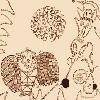 He possesses the unkempt street-hustler looks of Vincent Gallo, thepsychotic vulnerability of Syd Barrett, the spooked lonesomeness ofSkip Spence, the instrumental dexterity of Robin Williamson, the naïvesincerity of Tiny Tim, and a voice that sounds like a cross betweenMarc Bolan's early T. Rex warble and the evocative wail of KarenDalton. After his superlative debut Oh Me Oh My...,many were quick to heap praise on Devendra Banhart, hailing the 23-yearold singer-songwriter as a peerlessly original voice. With such obviousmusical precedents for Banhart's intimate, acoustic songcraft, thisadulation seems a bit overstated. Despite what has been said, DevendraBanhart hasn't reinvented the wheel. He has, however, used hisconsiderable lyrical and melodic gifts to create a handful ofidiosyncratic recordings that speak volumes for his songwriting talent.Oh Me Oh My... was immediately distinctive not only because ofBanhart's quavering vocal delivery and incredible fingerstyle, but alsobecause of its willfully low-budget recording aesthetic; the songs wereself-recorded live-to-tape on sub-par cassette recorders, Dictaphonesand answering machines. Two years on, Devendra Banhart has achieved amodicum of success, championed by Michael Gira, with a home on hisYoung God label. Although Banhart and Gira could easily have opted foran artificially studied recreation of the low-fidelity distortion andtape hiss of the demo reel, the right choice was made on Rejoicing in the Handsto present the performer in a simple, clean studio recording. Thetracks on this new album sound every bit as live and spontaneous as theOh Me Oh My... sessions, but the technical advantages of thestudio recording highlight every velvety pluck of the guitar stringsand every nuanced vibration of Devendra's labored vocals. Because thesesongs are refreshingly free of extraneous debris and contain onlyminimal, unobtrusive backing, Rejoicing is a marvelous showcasefor Banhart's songs and performances. Each track is a miniaturemasterpiece; few exceed the three-minute mark, but each has theimmediacy and resonance of déjà vu, as if Banhart was pulling from somevast collective-subconscious archive of archetypal sing-along folkmelodies. His lyrical themes are fascinating as always, strangere-combinations of dime-store mysticism, humorous reverie and the oddfanciful passage of surreal wordplay. On the title track, he is joinedby the legendary Vashti Bunyan, the elusive songstress who recorded theacid-folk classic Just Another Diamond Day and promptly disappearedfrom view. Their lovely duet is an affectionate homage to the placidsimplicity of the 60's British folk revival. -
He possesses the unkempt street-hustler looks of Vincent Gallo, thepsychotic vulnerability of Syd Barrett, the spooked lonesomeness ofSkip Spence, the instrumental dexterity of Robin Williamson, the naïvesincerity of Tiny Tim, and a voice that sounds like a cross betweenMarc Bolan's early T. Rex warble and the evocative wail of KarenDalton. After his superlative debut Oh Me Oh My...,many were quick to heap praise on Devendra Banhart, hailing the 23-yearold singer-songwriter as a peerlessly original voice. With such obviousmusical precedents for Banhart's intimate, acoustic songcraft, thisadulation seems a bit overstated. Despite what has been said, DevendraBanhart hasn't reinvented the wheel. He has, however, used hisconsiderable lyrical and melodic gifts to create a handful ofidiosyncratic recordings that speak volumes for his songwriting talent.Oh Me Oh My... was immediately distinctive not only because ofBanhart's quavering vocal delivery and incredible fingerstyle, but alsobecause of its willfully low-budget recording aesthetic; the songs wereself-recorded live-to-tape on sub-par cassette recorders, Dictaphonesand answering machines. Two years on, Devendra Banhart has achieved amodicum of success, championed by Michael Gira, with a home on hisYoung God label. Although Banhart and Gira could easily have opted foran artificially studied recreation of the low-fidelity distortion andtape hiss of the demo reel, the right choice was made on Rejoicing in the Handsto present the performer in a simple, clean studio recording. Thetracks on this new album sound every bit as live and spontaneous as theOh Me Oh My... sessions, but the technical advantages of thestudio recording highlight every velvety pluck of the guitar stringsand every nuanced vibration of Devendra's labored vocals. Because thesesongs are refreshingly free of extraneous debris and contain onlyminimal, unobtrusive backing, Rejoicing is a marvelous showcasefor Banhart's songs and performances. Each track is a miniaturemasterpiece; few exceed the three-minute mark, but each has theimmediacy and resonance of déjà vu, as if Banhart was pulling from somevast collective-subconscious archive of archetypal sing-along folkmelodies. His lyrical themes are fascinating as always, strangere-combinations of dime-store mysticism, humorous reverie and the oddfanciful passage of surreal wordplay. On the title track, he is joinedby the legendary Vashti Bunyan, the elusive songstress who recorded theacid-folk classic Just Another Diamond Day and promptly disappearedfrom view. Their lovely duet is an affectionate homage to the placidsimplicity of the 60's British folk revival. -  "Hey, yo, Abilities, man. Yo, I got a little something I gotta getoff my chest right here. A'ight, dig this, man: I'm sick of all thesepunk motherfuckers in this rap game, youknow'msayin? I'm sayin' thesefools steppin' up to us, knowin' they shit is straight GAHbage... youknow what I'm talkin' about: E&A don't play that shit, man."And there you have it: the first twenty seconds of "Act Right", less acouple of DJ Abilities' scratched responses. How many cliches can youcount? Well, a good half of this album isn't much better. In theinterest of saying something nice, however, Eyedea is a darned goodfreestyler, and his partner is lightning-quick on the crossfader. Onstage, they're clever and nimble and their technique is impressive, andif they still battle these days, they're probably worth seeing in thatcontext. Sadly, that's not what you get on E&A; instead,you mainly get to listen to juvenile you-suck rhymes and fag jokes fromthe comfort of your living room, where there presumably isn't anOOOOH-ing crowd around to convince you that cracks about trading headfor "creative juices" are witty. Oh, and then there are some pornosamples, and some tedious choruses, and Abilities scratches up some"FUNKY!"s and "WE GON' KEEP IT RAW!"s at a zillion miles a second tokeep the kids excited. If you've ever messed around with turntables,you'll admire his chops, but since his partner on the mic onlyoccasionally shuts up about how great they are (to say how much itsucks to get a job, for example, before bragging that he's never hadone), you'll also frequently wish that E&A was aninstrumental effort. Which is too bad, because at his best, Eyedea islike the Yngwie Malmsteen of MCs, and his vocals can mesh brilliantlywith Abilities' zany beats and scratching: "One Twenty" is terrifichead-nodding music for about half of its running length, and it's justone of several kamikaze rhymes on the disc. So much of it is somud-ditch dumb, though, that it's hard to sit around and wait for thegood tracks. They try to go out on a thoughtful, angsty note with theReznor-rap of "Glass" (TIP: Try not to be too surprised by the "shattering" metaphor.), but it's really too late by that point. Go looking for their recently-released Road Mix(23 minutes of standout moments from their shows, an edited version of"One Twenty" that doesn't overstay its welcome, and a frank discussionof the Smurfs that's funnier than anything on E&A) instead of wasting your time on this one.
"Hey, yo, Abilities, man. Yo, I got a little something I gotta getoff my chest right here. A'ight, dig this, man: I'm sick of all thesepunk motherfuckers in this rap game, youknow'msayin? I'm sayin' thesefools steppin' up to us, knowin' they shit is straight GAHbage... youknow what I'm talkin' about: E&A don't play that shit, man."And there you have it: the first twenty seconds of "Act Right", less acouple of DJ Abilities' scratched responses. How many cliches can youcount? Well, a good half of this album isn't much better. In theinterest of saying something nice, however, Eyedea is a darned goodfreestyler, and his partner is lightning-quick on the crossfader. Onstage, they're clever and nimble and their technique is impressive, andif they still battle these days, they're probably worth seeing in thatcontext. Sadly, that's not what you get on E&A; instead,you mainly get to listen to juvenile you-suck rhymes and fag jokes fromthe comfort of your living room, where there presumably isn't anOOOOH-ing crowd around to convince you that cracks about trading headfor "creative juices" are witty. Oh, and then there are some pornosamples, and some tedious choruses, and Abilities scratches up some"FUNKY!"s and "WE GON' KEEP IT RAW!"s at a zillion miles a second tokeep the kids excited. If you've ever messed around with turntables,you'll admire his chops, but since his partner on the mic onlyoccasionally shuts up about how great they are (to say how much itsucks to get a job, for example, before bragging that he's never hadone), you'll also frequently wish that E&A was aninstrumental effort. Which is too bad, because at his best, Eyedea islike the Yngwie Malmsteen of MCs, and his vocals can mesh brilliantlywith Abilities' zany beats and scratching: "One Twenty" is terrifichead-nodding music for about half of its running length, and it's justone of several kamikaze rhymes on the disc. So much of it is somud-ditch dumb, though, that it's hard to sit around and wait for thegood tracks. They try to go out on a thoughtful, angsty note with theReznor-rap of "Glass" (TIP: Try not to be too surprised by the "shattering" metaphor.), but it's really too late by that point. Go looking for their recently-released Road Mix(23 minutes of standout moments from their shows, an edited version of"One Twenty" that doesn't overstay its welcome, and a frank discussionof the Smurfs that's funnier than anything on E&A) instead of wasting your time on this one.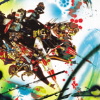 As it turns out, Bi-Conicals of the Rammellzeeisn't the guy's first full-length: Tri-Eight squeezed out two editionsand an instrumental version of this one late last year, though it lookslike the two albums were recorded more or less concurrently. Gomma,however, appears to have gotten the better pile of tapes out of thedeal, as the variety of producers on Bi-Conicals provides arange of sounds that is sorely lacking from DJ Kensei's beatwork here.Instead, the Japanese hip-hop and house maestro puts together aframework of synth noises that you probably heard too much of duringWax Trax!'s heyday, and while there's nothing much wrong with the MeatBeat bleeping of "Soldiers" or the KMFDM-style riffage on "I BeRamm:Ell:Zee:Zee", their familiarity draws attention to how thin andrepetitive some of the mixes are; a similar problem comes up when thevocals are so drenched in effects that they're practicallyunintelligible. Meanwhile, Ramm's usual style of delivery, a berserkmatching up of broken and rejigged cliches with surreal streetnarrative, succumbs to what I hope is just lousy improvising on "In theBack of the Caddy Shack", saddling an almost funky backing track with apathetic, and largely one-sided, conversation with a twenty-dollarwhore. In still other cases, relatively solid tracks are derailed byidiotic choruses or painful samples. With bad production decisions allaround, only a couple of cuts manage to avoid feeling twice as long asthey need to be: the title track's energetic (and only slightlyprocessed) vocals don't hew too closely to the simple and heavy mainrhythm, but they fit well with the anthemic chorus, and "New Meaning"opens the disc with some fun gurgling sounds and some of the mostmelodic vocoder work I've heard in a while. Even so, right on down tothe guest guitarists, everybody on this album has done betterelsewhere.
As it turns out, Bi-Conicals of the Rammellzeeisn't the guy's first full-length: Tri-Eight squeezed out two editionsand an instrumental version of this one late last year, though it lookslike the two albums were recorded more or less concurrently. Gomma,however, appears to have gotten the better pile of tapes out of thedeal, as the variety of producers on Bi-Conicals provides arange of sounds that is sorely lacking from DJ Kensei's beatwork here.Instead, the Japanese hip-hop and house maestro puts together aframework of synth noises that you probably heard too much of duringWax Trax!'s heyday, and while there's nothing much wrong with the MeatBeat bleeping of "Soldiers" or the KMFDM-style riffage on "I BeRamm:Ell:Zee:Zee", their familiarity draws attention to how thin andrepetitive some of the mixes are; a similar problem comes up when thevocals are so drenched in effects that they're practicallyunintelligible. Meanwhile, Ramm's usual style of delivery, a berserkmatching up of broken and rejigged cliches with surreal streetnarrative, succumbs to what I hope is just lousy improvising on "In theBack of the Caddy Shack", saddling an almost funky backing track with apathetic, and largely one-sided, conversation with a twenty-dollarwhore. In still other cases, relatively solid tracks are derailed byidiotic choruses or painful samples. With bad production decisions allaround, only a couple of cuts manage to avoid feeling twice as long asthey need to be: the title track's energetic (and only slightlyprocessed) vocals don't hew too closely to the simple and heavy mainrhythm, but they fit well with the anthemic chorus, and "New Meaning"opens the disc with some fun gurgling sounds and some of the mostmelodic vocoder work I've heard in a while. Even so, right on down tothe guest guitarists, everybody on this album has done betterelsewhere.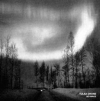 Wading out of the woods and into the snow with a sound all their own,Tulsa Drone cause a range of emotions to well up on their powerfuldebut. Guitar/bass/drums/hammered dulcimer is not a combination onehears everyday, and as soon as the slight strangeness of it all faded Isettled in for whatever came next. Lo and behold, they have somethinghere, as this is the most unique and powerful music I have heard inmonths. It puts me in a place of complete wonder, like a little boystepping into a new experience like flying on an airplane for the firsttime. Tulsa Drone have been using trains in their promotional postersrecently, and to me that's extremely appropriate, as their music is adrifter's: hopping train car to train car looking for work in the nexttown, trying desperately to improve a station of life that was down andout to begin with. The Drone in their name is a bit of a misnomer tome, as there is no real drone in this music, no constant that echoes inand out on itself that continues for minutes. That's not a complaint,though, as they've certainly manufactured some fine moments on theirfirst recording. The melodic beginnings of "Chiaroscuro" are stirring,with production heavy on the bass side, and a genuine feel for thedramatic. As the guitars flare, the bass and dulcimer rise to meetthem, then all tumble like lovers together back to the base. "Vendetta"steps up the dulcimer to main instrument status, letting everythingbuild around it, with Spanish guitar and arpreggios painting thepicture of the score that needs settling. Occasionally there are hornsor other sounds added for a little spice or variation, but for the mostpart the music is the same core. I found it fascinating that they foundso many different approaches with the same instruments, and so manythemes to operate under. Some hear "drone" and think "boring." Ifnothing else Tulsa Drone prove that wrong, but at their best the createa new horizon to look towards.
Wading out of the woods and into the snow with a sound all their own,Tulsa Drone cause a range of emotions to well up on their powerfuldebut. Guitar/bass/drums/hammered dulcimer is not a combination onehears everyday, and as soon as the slight strangeness of it all faded Isettled in for whatever came next. Lo and behold, they have somethinghere, as this is the most unique and powerful music I have heard inmonths. It puts me in a place of complete wonder, like a little boystepping into a new experience like flying on an airplane for the firsttime. Tulsa Drone have been using trains in their promotional postersrecently, and to me that's extremely appropriate, as their music is adrifter's: hopping train car to train car looking for work in the nexttown, trying desperately to improve a station of life that was down andout to begin with. The Drone in their name is a bit of a misnomer tome, as there is no real drone in this music, no constant that echoes inand out on itself that continues for minutes. That's not a complaint,though, as they've certainly manufactured some fine moments on theirfirst recording. The melodic beginnings of "Chiaroscuro" are stirring,with production heavy on the bass side, and a genuine feel for thedramatic. As the guitars flare, the bass and dulcimer rise to meetthem, then all tumble like lovers together back to the base. "Vendetta"steps up the dulcimer to main instrument status, letting everythingbuild around it, with Spanish guitar and arpreggios painting thepicture of the score that needs settling. Occasionally there are hornsor other sounds added for a little spice or variation, but for the mostpart the music is the same core. I found it fascinating that they foundso many different approaches with the same instruments, and so manythemes to operate under. Some hear "drone" and think "boring." Ifnothing else Tulsa Drone prove that wrong, but at their best the createa new horizon to look towards. "Help wanted: former lead singer of grunge and hard rock outfits needsnew direction for forthcoming solo record. Friends and former bandmembers are welcome to apply within." Mark Lanegan might not haveadvertised quite like this for his debut on Beggars, but that's what heended up with for this EP intended as a primer for the record laterthis year. Queens Nick Oliveri and Josh Homme play a number ofinstruments on the majority of the songs and even share songwritingduties, and Greg Dulli — Lanegan's current partner-in-crime from theGutter Twins project — adds flavor here and there. With a roster likethat, the music is bound to be a departure from previous solo records;the question is whether it is a welcome one. I'm holding out hope, butthis group of songs doesn't inspire much confidence. This is chancestaken, trying out a few strange licks and larks, and floating them outfor good measure. There are still strong songs, and if those are anindication of the upcoming full-length, I have no reason to worry. It'sthe misses that bring out a little anxiety. Sure, the cackle andplayfulness that open the EP is pure sex, bump and grind and choircoos, with scorching leads courtesy of Homme. The next track, though,flows into the inane, with Chris Goss singing "He's got the wholeworld..." and Lanegan riffing spoken word over the top. Eventuallythere's a multitude of voices, and then it fades to nothing, or nothingof value anyway. Everywhere that classic swallowed-glass Lanegan voiceturns it out and moves it along, always perfect. It's the music thatfails him from time to time. The cover, obligatory for most EPs thesedays it seems, is Captain Beefheart's "Clear Spot," and it's not worththe time or Alain Johannes' involvement, as it isn't all thatimpressive. And the piano ballad "Lexington Slow Down" is also a strainto listen to for most of it's three minutes. The rest, though is prettystrong and flows nicely. If Lanegan left most of the experimentation tothe wayside on his album, more the better. If not, it's high time tomorph again.
"Help wanted: former lead singer of grunge and hard rock outfits needsnew direction for forthcoming solo record. Friends and former bandmembers are welcome to apply within." Mark Lanegan might not haveadvertised quite like this for his debut on Beggars, but that's what heended up with for this EP intended as a primer for the record laterthis year. Queens Nick Oliveri and Josh Homme play a number ofinstruments on the majority of the songs and even share songwritingduties, and Greg Dulli — Lanegan's current partner-in-crime from theGutter Twins project — adds flavor here and there. With a roster likethat, the music is bound to be a departure from previous solo records;the question is whether it is a welcome one. I'm holding out hope, butthis group of songs doesn't inspire much confidence. This is chancestaken, trying out a few strange licks and larks, and floating them outfor good measure. There are still strong songs, and if those are anindication of the upcoming full-length, I have no reason to worry. It'sthe misses that bring out a little anxiety. Sure, the cackle andplayfulness that open the EP is pure sex, bump and grind and choircoos, with scorching leads courtesy of Homme. The next track, though,flows into the inane, with Chris Goss singing "He's got the wholeworld..." and Lanegan riffing spoken word over the top. Eventuallythere's a multitude of voices, and then it fades to nothing, or nothingof value anyway. Everywhere that classic swallowed-glass Lanegan voiceturns it out and moves it along, always perfect. It's the music thatfails him from time to time. The cover, obligatory for most EPs thesedays it seems, is Captain Beefheart's "Clear Spot," and it's not worththe time or Alain Johannes' involvement, as it isn't all thatimpressive. And the piano ballad "Lexington Slow Down" is also a strainto listen to for most of it's three minutes. The rest, though is prettystrong and flows nicely. If Lanegan left most of the experimentation tothe wayside on his album, more the better. If not, it's high time tomorph again.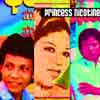 Bizarre radio collages might be the most spectacular examples of AlanBishop's peculiar style of ethnomusicology, but the fewmore-traditional "song" collections available from the Sun City Girl'sSublime Frequencies label provide equally fascinating glimpses intocultures that, while previously documented, have surely never receivedthe kind of treatment Bishop thankfully feels compelled to provide. Thesame guerilla tactics that spawned the string of Radio releases are responsible for Princess Nicotine and its predecessor, Folk and Pop Sounds of Sumatra Vol.1,both discs gathered from tapes Bishop collected over two decades oftraveling through Indonesia and Southeast Asia. In compiling hissouvenirs for release, the label owner flaunts the idiosyncratic and(to a degree) more intimate character of his collections, which, at thevery least, offer a refreshing break from over-ambitious, survey-styledcomps. Bishop's a-scholastic method also serves as introduction tomusic previously avoided by dominant, purist-oriented "world music"markets. "Folk and Pop" become blanket terms to describe an explosionof hybrid styles, mesmerizing mash-ups of traditional Burmese songforms with a range of disparate Western influences often more at oddswith each other than with their Eastern counterparts. Bishop seemsintent on granting these largely undocumented currents, "polluted" bymost ethnomusicologists' standards, the relevance they deserve, and ongrounds of this first volume alone, he has succeeded. Princesswas actually released in a shortened and very limited version back in1994, and it's no wonder the curator has decided to bring it back. Eachof the twelve tracks is an entirely distinct piece of what could becomemy favorite discovery of the year. The Burmese integrate elements ofWestern pop, psych, jazz, even fragments of generic theatre and filmmusic in such unique and self-serving ways that any referentialmaterial becomes blank fodder for compositions singular in both theiremotional immediacy and hallucinogenic grandeur. When it's at allenergetic, the music is utterly wild, with discordant scales collidingon frantic solo flights and cymbal bursts punctuating each intricateturn and jump of the vocalists, often engaged in the intenselystructured call-and-response to which much of the music hinges withmiraculous precision. The calmer tracks are no less astounding;propelled by reeds, violin, chirping flutes, and the incomparable,entirely characteristic Burmese approach to the piano, they are allstrangely psychedelic, breezy but charged with a jazzist edge andenough abrupt shifts and tangential melodic parts to fit with Westernprog definitions. One song sounds like a warped version of antiqueDisney film music; another takes what could be the saccharine,string-laden climax to an off-Broadway ham hit and, through theaddition of only a few thin piano lines and other percussive scatter,creates a string of delicate, truly moving passages. Bishop does notlie when he talks about the "very distinct" nature of this music,something that is unfortunately hard to communicate without relying onWestern points of reference. I will say that previous exposure toseveral of the scant Burmese collections available domestically (evento the Sun City Girls' more adventurous ethnic borrowing) has in no wayprepared me for the treasures of Princess, and, given Sublime Frequencies' rapid release schedule, a second volume should not be far behind.
Bizarre radio collages might be the most spectacular examples of AlanBishop's peculiar style of ethnomusicology, but the fewmore-traditional "song" collections available from the Sun City Girl'sSublime Frequencies label provide equally fascinating glimpses intocultures that, while previously documented, have surely never receivedthe kind of treatment Bishop thankfully feels compelled to provide. Thesame guerilla tactics that spawned the string of Radio releases are responsible for Princess Nicotine and its predecessor, Folk and Pop Sounds of Sumatra Vol.1,both discs gathered from tapes Bishop collected over two decades oftraveling through Indonesia and Southeast Asia. In compiling hissouvenirs for release, the label owner flaunts the idiosyncratic and(to a degree) more intimate character of his collections, which, at thevery least, offer a refreshing break from over-ambitious, survey-styledcomps. Bishop's a-scholastic method also serves as introduction tomusic previously avoided by dominant, purist-oriented "world music"markets. "Folk and Pop" become blanket terms to describe an explosionof hybrid styles, mesmerizing mash-ups of traditional Burmese songforms with a range of disparate Western influences often more at oddswith each other than with their Eastern counterparts. Bishop seemsintent on granting these largely undocumented currents, "polluted" bymost ethnomusicologists' standards, the relevance they deserve, and ongrounds of this first volume alone, he has succeeded. Princesswas actually released in a shortened and very limited version back in1994, and it's no wonder the curator has decided to bring it back. Eachof the twelve tracks is an entirely distinct piece of what could becomemy favorite discovery of the year. The Burmese integrate elements ofWestern pop, psych, jazz, even fragments of generic theatre and filmmusic in such unique and self-serving ways that any referentialmaterial becomes blank fodder for compositions singular in both theiremotional immediacy and hallucinogenic grandeur. When it's at allenergetic, the music is utterly wild, with discordant scales collidingon frantic solo flights and cymbal bursts punctuating each intricateturn and jump of the vocalists, often engaged in the intenselystructured call-and-response to which much of the music hinges withmiraculous precision. The calmer tracks are no less astounding;propelled by reeds, violin, chirping flutes, and the incomparable,entirely characteristic Burmese approach to the piano, they are allstrangely psychedelic, breezy but charged with a jazzist edge andenough abrupt shifts and tangential melodic parts to fit with Westernprog definitions. One song sounds like a warped version of antiqueDisney film music; another takes what could be the saccharine,string-laden climax to an off-Broadway ham hit and, through theaddition of only a few thin piano lines and other percussive scatter,creates a string of delicate, truly moving passages. Bishop does notlie when he talks about the "very distinct" nature of this music,something that is unfortunately hard to communicate without relying onWestern points of reference. I will say that previous exposure toseveral of the scant Burmese collections available domestically (evento the Sun City Girls' more adventurous ethnic borrowing) has in no wayprepared me for the treasures of Princess, and, given Sublime Frequencies' rapid release schedule, a second volume should not be far behind.- Bo HeinBurmese Golden Drum
- Mar Mar AyeBeautiful Town
- Tonte TheintanLover of the Winter and Snow
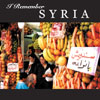 Sublime Frequencies' first double CD continues with the amateurtravelogue aesthetic that's infused nearly all the label's releases todate, and to my ears it is the most successful, in its transportingpower and focused depiction of the rich sound world available in acountry whose cultural legacy has long been consciously ignored byWestern media. Essentially an audio scrapbook assembled by Mark Gergisfrom field recordings made during two trips to Syria near the turn ofthe century, I Rememberperfectly accommodates Gergis' cut-up skills, so essential to hisprevious work in Porest and Monopause. His creation distances itselffrom Alan Bishop's radio collages by assuming a considerably morerelaxed flow, one that allows for the development of some nice thematicundercurrents. Though I Remember contains plenty of radiocaptures, there is little that compares to Bishop's schizophrenicdial-spinning, and the amount of shortwave noisemaking is surprisinglysmall given Gergis' background. A good portion of the two discs comesfrom talk radio segments of political or socially progressiveorientation. The first disc begins framed within the introduction to aprogram called "Syria Today;" later on, reports of theIsraeli/Palestinian crisis emerge alongside light-hearted Youth Radioproductions and one enlightening broadcast entitled "Arab Women inFocus." Some of the most interesting moments are the fragments ofconversations Gergis has with a variety of citizens, including a35-year old homosexual in Aleppo whose wife remains oblivious to hislifestyle, several people eager to share criticisms of America, and agentleman who sounds like a head official of Kazib, a newly-discoveredunderground city. There are recordings from mosque interiors, weddings,nightclubs, street musicians, outdoor markets, even the competingsounds of distorted cassette kiosks. One woman performs a "maternalbedouin" song about Saddam Hussein, presumably at Gergis' request asher hesitant, giggling delivery shows signs of embarrassment orindulgence. The collage is spliced with the expert blends, fades, andjuxtapositions that have made Porest's work so well-liked, and itcovers an immense amount of ground, seamlessly, and without anyalienating jump cuts or premature endings, something that does not holdtrue for all of Bishop's creations. Its increased notation and clearinterest in engaging the rich history and contemporary social andpolitical climates in Syria make I Remember one of the most valuable and listenable items from this great new label.
Sublime Frequencies' first double CD continues with the amateurtravelogue aesthetic that's infused nearly all the label's releases todate, and to my ears it is the most successful, in its transportingpower and focused depiction of the rich sound world available in acountry whose cultural legacy has long been consciously ignored byWestern media. Essentially an audio scrapbook assembled by Mark Gergisfrom field recordings made during two trips to Syria near the turn ofthe century, I Rememberperfectly accommodates Gergis' cut-up skills, so essential to hisprevious work in Porest and Monopause. His creation distances itselffrom Alan Bishop's radio collages by assuming a considerably morerelaxed flow, one that allows for the development of some nice thematicundercurrents. Though I Remember contains plenty of radiocaptures, there is little that compares to Bishop's schizophrenicdial-spinning, and the amount of shortwave noisemaking is surprisinglysmall given Gergis' background. A good portion of the two discs comesfrom talk radio segments of political or socially progressiveorientation. The first disc begins framed within the introduction to aprogram called "Syria Today;" later on, reports of theIsraeli/Palestinian crisis emerge alongside light-hearted Youth Radioproductions and one enlightening broadcast entitled "Arab Women inFocus." Some of the most interesting moments are the fragments ofconversations Gergis has with a variety of citizens, including a35-year old homosexual in Aleppo whose wife remains oblivious to hislifestyle, several people eager to share criticisms of America, and agentleman who sounds like a head official of Kazib, a newly-discoveredunderground city. There are recordings from mosque interiors, weddings,nightclubs, street musicians, outdoor markets, even the competingsounds of distorted cassette kiosks. One woman performs a "maternalbedouin" song about Saddam Hussein, presumably at Gergis' request asher hesitant, giggling delivery shows signs of embarrassment orindulgence. The collage is spliced with the expert blends, fades, andjuxtapositions that have made Porest's work so well-liked, and itcovers an immense amount of ground, seamlessly, and without anyalienating jump cuts or premature endings, something that does not holdtrue for all of Bishop's creations. Its increased notation and clearinterest in engaging the rich history and contemporary social andpolitical climates in Syria make I Remember one of the most valuable and listenable items from this great new label. Composed mostly of wandering guitar echoes and fuzzed-out machine noise or rhythms, the heart of these songs lay in their zen-like construction. The eleven songs that make up this record drift by in a fog that sends all images into slow-motion: light becomes amazingly intense and the simplest of movements stand as monuments to the beauty of the body.
Composed mostly of wandering guitar echoes and fuzzed-out machine noise or rhythms, the heart of these songs lay in their zen-like construction. The eleven songs that make up this record drift by in a fog that sends all images into slow-motion: light becomes amazingly intense and the simplest of movements stand as monuments to the beauty of the body.
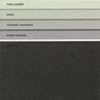 A league of distinguished noisemen emerge with the subtle frayedfilaments of the two extended piece "Brackwater." The title track emitsa genuinely blazing low-fi double-take on what could either be a recordgoin' round and round doused in kerosene, or perhaps the splitting ofthe atom. This sounds like a grand procedure actually, almost like asquared off experiment between a quartet that's been choreographed tosync perfectly. Otomo Yoshihide's turntables blend incredibly well withTomas Korber's synthesized electronic play as ErikM and ToshimaruNakamura mix and otherwise dial-in to add micro-effects and organicfeedback. "Brackwater" is like an interactive carpet of static beingfine tuned, there's something really palpably textural about theircombination playing, with its heart monitor central to the post-climaxof the track, the beat goes on. Twisting into cold hallway like spaces,the entire shift of drama flows into the doubt of nighttime. Korber'sguitar is only hinted at, but makes for unpresumptuous but perceptibleeffect. The addendum "And A Slice of Bread" buzzes propitiously. Thebuild is live, the staging is simple, the panorama widens. They havefiltered much of the general angst normally heard in works that rely onthe effects of their own technical difficulties (feedback, static,whitenoise, other "on-air" sounds). The track renders the artifice ofan arboretum, perhaps created in a communications lab, somethingfuturistic, scientific, lost in a time warp. This one calls for volumeto attain its excessive subtleties.
A league of distinguished noisemen emerge with the subtle frayedfilaments of the two extended piece "Brackwater." The title track emitsa genuinely blazing low-fi double-take on what could either be a recordgoin' round and round doused in kerosene, or perhaps the splitting ofthe atom. This sounds like a grand procedure actually, almost like asquared off experiment between a quartet that's been choreographed tosync perfectly. Otomo Yoshihide's turntables blend incredibly well withTomas Korber's synthesized electronic play as ErikM and ToshimaruNakamura mix and otherwise dial-in to add micro-effects and organicfeedback. "Brackwater" is like an interactive carpet of static beingfine tuned, there's something really palpably textural about theircombination playing, with its heart monitor central to the post-climaxof the track, the beat goes on. Twisting into cold hallway like spaces,the entire shift of drama flows into the doubt of nighttime. Korber'sguitar is only hinted at, but makes for unpresumptuous but perceptibleeffect. The addendum "And A Slice of Bread" buzzes propitiously. Thebuild is live, the staging is simple, the panorama widens. They havefiltered much of the general angst normally heard in works that rely onthe effects of their own technical difficulties (feedback, static,whitenoise, other "on-air" sounds). The track renders the artifice ofan arboretum, perhaps created in a communications lab, somethingfuturistic, scientific, lost in a time warp. This one calls for volumeto attain its excessive subtleties.


